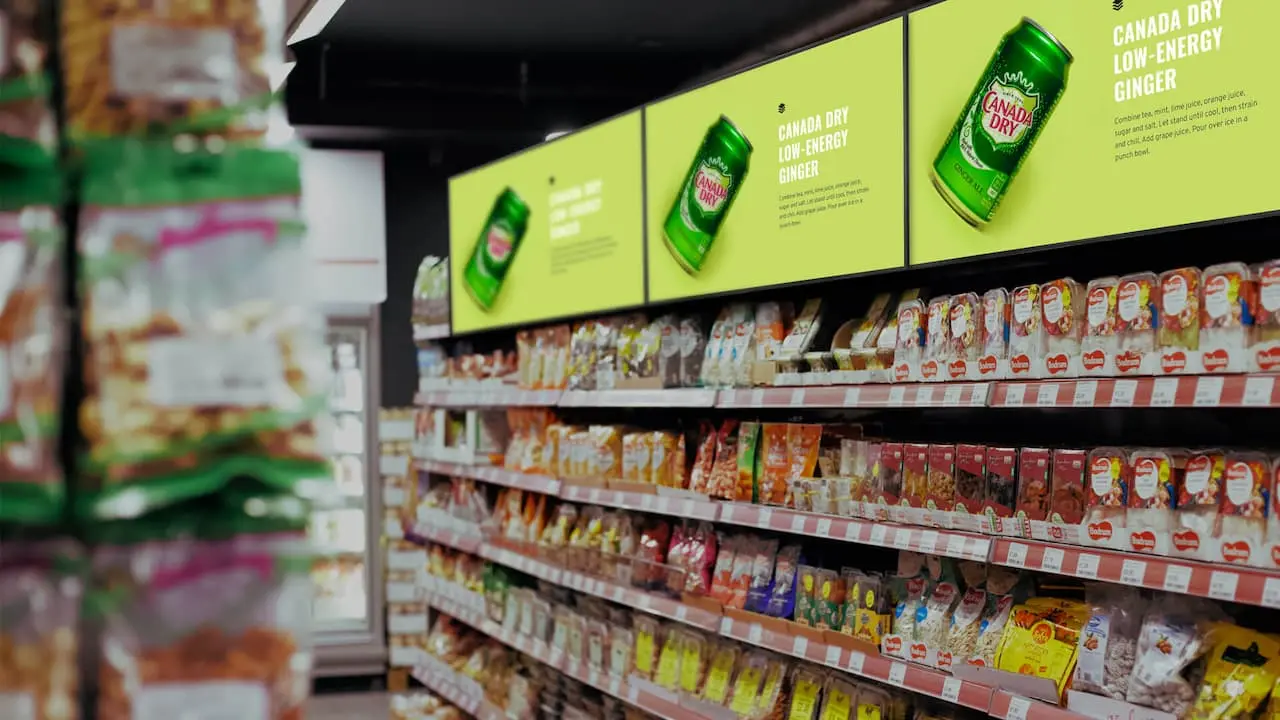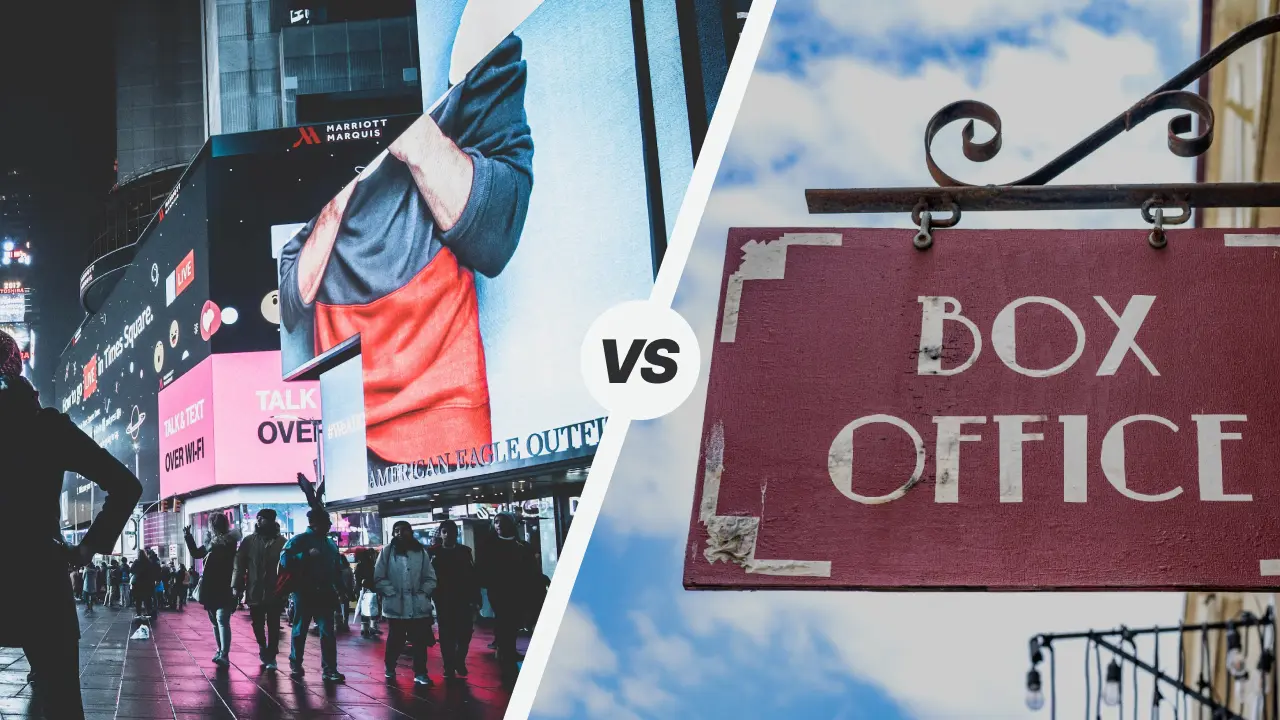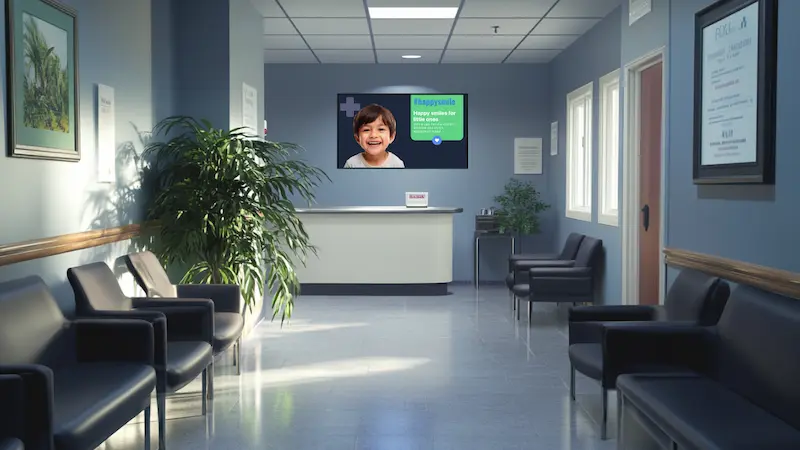
Table of Content
If you've been following our updates, you know Look Digital Signage is all about giving users flexible, powerful tools without the enterprise overhead. And now there's a big step forward: Look signage software is officially compatible with Raspberry Pi devices.
This opens the door for more affordable, energy-efficient signage setups that don’t sacrifice performance or reliability. Businesses and integrators can now deploy Look on a budget-friendly microcomputer that’s capable of handling full HD content, networked control, and real-time updates.
Read also on the Look Blog: What is Raspberry Pi? A Simple Guide for Beginners
Why This Matters: Affordable, Flexible, Scalable
Until now, reliable digital signage has often meant choosing between high costs and limited functionality. With Raspberry Pi and Look CMS support, you're looking at:
- Lower hardware costs per screen, especially for networks with dozens or hundreds of endpoints.
- Remote management from a single dashboard, no matter where your Pis are installed.
- Scalable deployments, where adding a screen doesn’t mean rethinking your budget.
There are also operational advantages that might be even more compelling.
The form factor alone opens up possibilities. These devices are small enough to hide behind screens or mount inside kiosks where traditional players simply won't fit. The GPIO pins and multiple USB ports mean you can integrate custom hardware such as touchscreens, sensors, or whatever your specific use case requires.
For multi-location deployments, the logistics become much simpler. Raspberry Pi hardware is standardized globally, so you can ship units anywhere without worrying about proprietary components or customs issues. If a unit fails, replacement is straightforward since any electronics distributor carries them.
Related article: Why Use Raspberry Pi for Digital Signage?

Supported Hardware: Pi 4 and Pi 5
Look CMS currently supports the Raspberry Pi 4 and Pi 5 models; earlier versions don't have the processing power for modern signage requirements.
Raspberry Pi 4 Model B uses a Broadcom BCM2711 quad-core ARM Cortex-A72 CPU running at 1.5GHz (1.8GHz on newer boards). Available in 1GB - 8GB RAM configurations. The dual micro-HDMI ports can drive two 4K monitors at 30Hz each, or a single 4K display at 60Hz. Connectivity includes Gigabit Ethernet, 802.11ac Wi-Fi, and Bluetooth 5.0.
Raspberry Pi 5 represents a significant upgrade with the Broadcom BCM2712 quad-core ARM Cortex-A76 running at 2.4GHz. It uses faster LPDDR4X RAM in the same capacity options. The key improvement is video output. The Pi 5 can drive two 4K displays at 60Hz simultaneously, doubling the Pi 4's capability. Network connectivity remains essentially the same.
Both models include hardware H.265 decoding, which is crucial for smooth video playback in signage applications.
What You'll Need for Setup
The hardware requirements are straightforward:
- Raspberry Pi 4 or 5 (2GB RAM minimum, 4GB recommended for standard content, 8GB for demanding applications)
- HDMI-compatible display
- microSD card (32GB or larger, Class 10 for adequate read/write speeds)
- Appropriate power supply (5V/3A for Pi 4, 5V/5A for Pi 5)
- Network connection (Ethernet preferred for stability, Wi-Fi supported)
- USB keyboard and mouse for initial configuration
On the software side, you'll need the Raspberry Pi Imager on a computer and Look's custom OS image, which comes preconfigured with all necessary components. A Look Digital Signage account is required for content management. A 14-day free trial is available without credit card requirements.
Installation Process: Streamlined by Design
Look has simplified what used to be a complex setup process:
- Image preparation – Using Raspberry Pi Imager, select "Use custom" and load Look's OS image. Choose your Pi model and write the image to the microSD card.
- Initial boot – Insert the prepared SD card, connect your display and network, then power on. The first boot displays a 6-digit pairing code.
- CMS integration – In your Look dashboard, select "Add New Screen" and enter the pairing code. Assign a name and location to the device.
- Content deployment – Upload and schedule your content through the Look CMS. The Pi automatically downloads and begins displaying your playlists.
The entire process takes minutes rather than hours. Because Look provides the complete OS image, there's no need to manually install Linux distributions or configure third-party software.
For a detailed step-by-step walkthrough, check out our complete Raspberry Pi setup guide.
Performance Expectations and Limitations
Both Pi models handle typical signage content well, but understanding their capabilities helps set realistic expectations.
Content compatibility is comprehensive
Look CMS on Raspberry Pi 4/5 is optimized for:
- Full HD (1080p) video playback (H.264 recommended)
- Smooth 4K playback (Pi 5 only, with hardware acceleration enabled)
- Dynamic templates and layouts with real-time content updates
- Support for HTML5 content, live feeds, weather widgets, QR triggers
- Background content syncing over the cloud
Video performance varies by model.
The Pi 4 can drive one 4K display at 60Hz or two 4K displays at 30Hz each. The Pi 5 manages two 4K displays at 60Hz simultaneously. Both include H.265 hardware decoding for smooth 4K video playback. H.264 support is hardware-accelerated on Pi 4, while Pi 5 handles 1080p H.264 at 60fps through software decoding without frame drops.
However, extremely high-bitrate or uncompressed 4K content may exceed processing capabilities. Content should be optimized using H.265 encoding for 4K applications, with moderate bitrates for best results.
General performance is solid
Look's image comes pre-configured to run efficiently. You don't need to worry about tweaking settings – everything's optimized out of the box. In practice, your Pi will perform just like dedicated media players for typical signage content, such as full-screen videos, image slideshows, and dynamic layouts all work as expected.
The practical limit is two simultaneous 4K video streams at 60Hz. Single 4K or multiple 1080p streams play without issues.

Real-World Applications
Current Look customers are deploying Pi-based signage across various sectors:
Retail environments
Independent retailers use Pi-driven displays for window promotions and point-of-sale messaging. Look's scheduling capabilities enable automatic content rotation based on time of day, season, or promotional calendars. The low hardware cost makes multiple screens economically viable.
Food service
Restaurants and cafes deploy Pi-based menu boards that automatically switch between breakfast, lunch, and dinner offerings. Look's layered layout system supports background imagery with overlaid text and pricing, plus promotional video content. Menu updates through the CMS appear instantly across all locations.
Educational and corporate communications
Schools and universities use Pi displays throughout campuses for announcements, event schedules, and emergency communications. The CMS allows content targeting by building or department, ensuring relevant information reaches appropriate audiences.
Pro Tips for Ongoing Success
Several operational considerations can significantly impact long-term success:
Network connectivity – You'll want to use Ethernet whenever possible instead of Wi-Fi. Wired connections are just more reliable, especially in busy offices where Wi-Fi gets congested. Consistent network access keeps your content updates flowing and remote monitoring working properly.
Component quality – Don't skimp on the basics. Get a decent microSD card (Class 10, 32GB minimum) and use official Raspberry Pi power supplies. Cheap components will cause headaches down the road – slow performance, random crashes, or complete failures. Your power supply should meet the specs (5V/3A for Pi 4, 5V/5A for Pi 5) to prevent the CPU from throttling when you need it most.
Content scheduling – Think about when you need heavy content running. If you've got a long promotional video, you probably don't need it looping 24/7. Schedule it for peak hours when customers are around, then switch to lighter content or static displays during quiet times. This keeps your Pi running smoothly without overworking it.
Maintenance – Look handles most of the heavy lifting here. The software updates automatically in the background, so you don't need to babysit it. Just keep your Pi's firmware current when updates are available. The platform's remote monitoring shows you exactly what's happening with your displays in real-time.
Monitoring your displays – Look's dashboard shows you when each device last checked in and lets you grab screenshots of what's currently displaying. If a screen goes offline, you'll see it immediately. This makes it easy to spot which units lost power or network connection.
Ready to Try Look on Raspberry Pi?
So there you have it. Look Digital Signage now works seamlessly with Raspberry Pi, and honestly, it changes the game for digital signage. You're looking at professional-grade displays powered by a $60 computer, managed entirely through the cloud.
The best part? You can test everything for free without pulling out your credit card. Grab a Pi, download Look's image, and you'll have a working digital sign in minutes.
If you've been on the fence about digital signage because of cost or complexity, this is your chance to jump in. Try Look CMS free and see how your Raspberry Pi becomes a powerful signage solution that grows with your needs.








